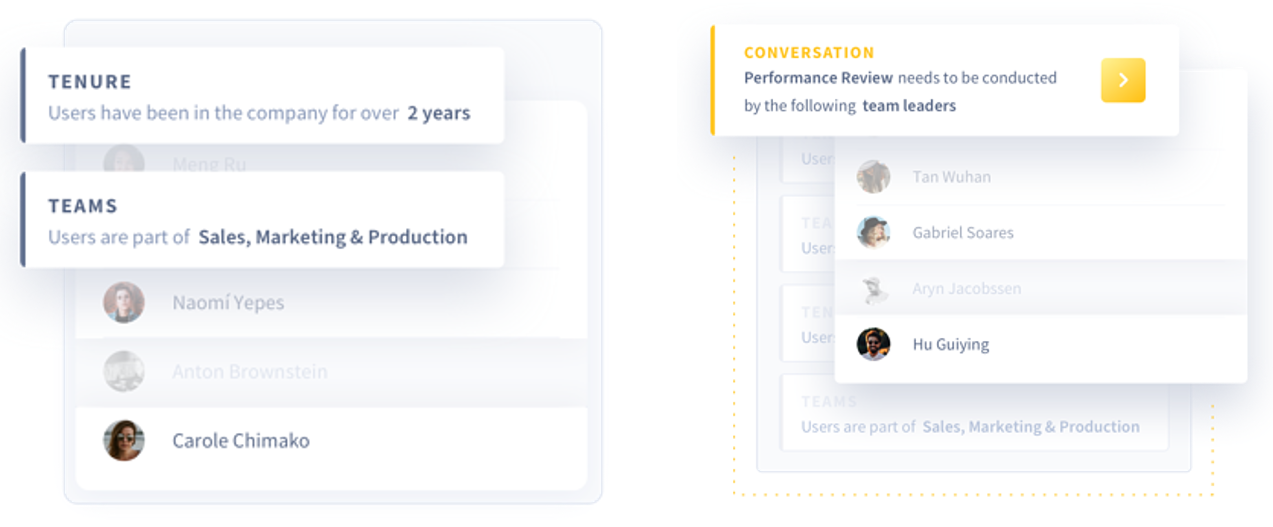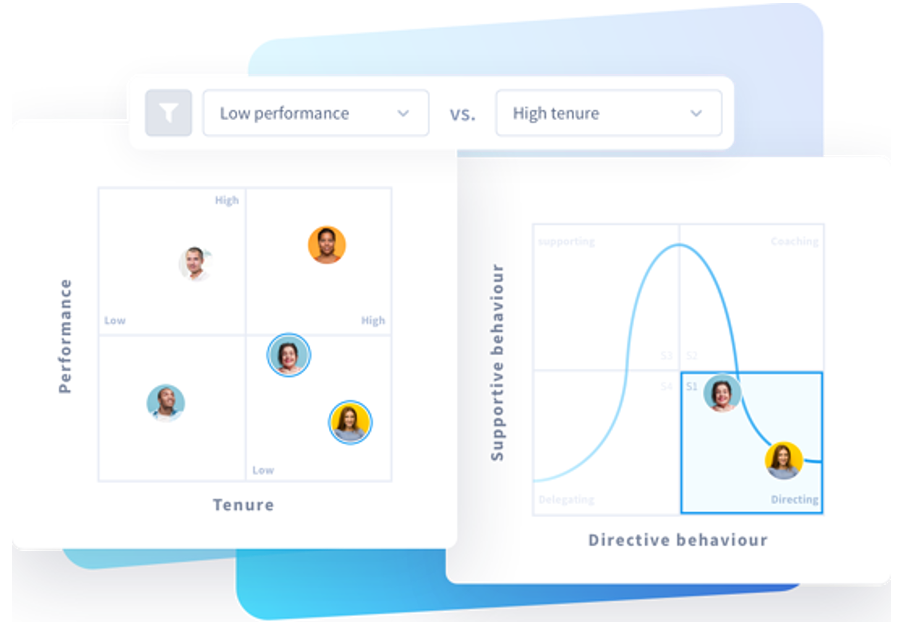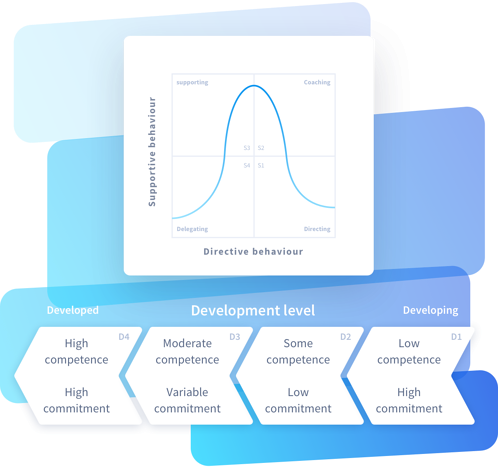
A powerful leadership style with people analytics
Leaders can have a significant impact on culture and values in an organisation. Employees and organisations are constantly changing, so it's quite straightforward that your leadership style should change with them.
If you are an HR professional, you know how powerful it is to segment employees by demographics to have a better overview of what is happening in your organisation. This allows you to treat them according to their achievements and progress. This also influences one-on-one regularity. We know that many team leaders struggle to define the frequency in which they should sit together with their team members. A new hire probably needs more follow-up than other more experienced employees. Therefore, your leadership style should differ depending on your employees' situation.
If you are part of a small organisation, you probably know your team, their experience, their performance and perhaps you have frequent informal conversations. However, this task becomes more challenging when teams work together across functions, locations, or when the number of team members increases. You can face this challenge by applying some manual statistics which are very time consuming and not really up to date. Instead, you can make use of people analytics to get the most of your employees' insights (at any given time).
How can you make people analytics work for you?
Imagine you have the possibility to segment your employees by maturity on their position vs their performance. Imagine a full map of your current employees' situation together with what they need or don't need. Can you already picture how many actions you could take based on this visualisation?
There is no need to over-nurture qualified employees with extra follow-up. For instance, the person who has overseen the company's finances for the past years and is doing a good job, might not want their manager following up his/her progress weekly. With Unit4, you can avoid this by segmenting talent with the use of filters. As you can see on the image below, the user filter only targets employees that have been in the company for over two years and then easily alternates their conversation cadence to not over nurture them.

The filters feature is a powerful tool to identify frontrunners and low performers, the last ones might need their leaders to help them improve themselves. Once you identify your people's needs with filters, it might be hard to know how to coach them. This is when *The Situational Leadership Model comes into play. This model encourages leaders to take stock of their team members, evaluate the variables in the workplace and adjust their leadership style depending on a specific situation with a team member.
The Situational Leadership Model

The four leadership styles in The Situational Leadership Model are: Directing, Coaching, Supporting and Delegating. They can be used according to the motivational need of your team member. The different leadership styles focus on developing individual and job-specific skills. In a directing style, a leader needs to tell the employee what to do and how.
The coaching style is more democratic, as it involves more discussion between the two parties involved. This is like the supporting style, however, here the employee has more ownership over decisions than in the coaching style. Finally, the delegating leadership style demands that the leader (or manager) gets less involved in the decision-making process. The employee takes most (not all) of the responsibility in getting the job done.
In the visual below, this is explained more clearly. The curve starts in S1 with a more directive behaviour and low supporting behaviour, then it goes up and stays central in S2 and S3 (high supportive behaviour and medium directive behaviour), to finally end in S4 with low supportive and directive behaviour. The development arrow starts from directing S1, following the curve to end with delegating, which is the situation where the employee is fully developed in the position.

Example: A senior employee might want more responsibilities and opportunities to feel challenged and motivated to achieve greater success. On the other hand, a junior member may seek a direct or coaching leadership style to keep her engaged and on the right track.
Again, the only way you can apply this model and decide the right approach is with valuable insights from your employees. Keep in mind that leadership is continuously evolving.






